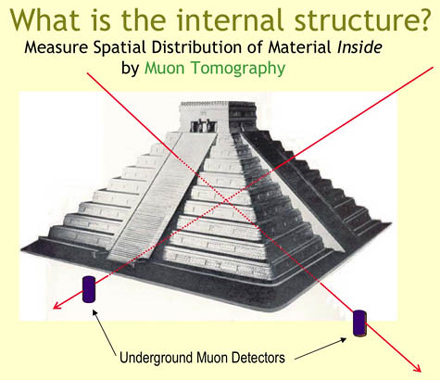OK, I’m excited. Particle physics and archaeology are coming together to investigate Mayan mounds, most of which have not been excavated. No-one really knows what is inside these impressive structures. But now, scientists working with muon detectors are coming to help.
The first major experiment of the Maya Muon Group will bridge the disciplines of physics and archeology. The particle detectors and related systems are designed specifically to explore ruins of a Maya pyramid in collaboration with colleagues at the UT Mesoamerican Archaeological Laboratory. The Maya Muon Group will travel to La Milpa in northwest Belize to make discoveries about “Structure 1” – a jungle-covered mound covering an unexplored Maya ruin.
Pointing out that dense materials block more muons, Patel explains that a muon detector can actually detect rooms, spaces, and caves inside what seems to be solid: A detector next to a Maya pyramid, for example, will see fewer particles coming from the direction of the structure than from other angles: a muon “shadow.” And if a part of that pyramid is less dense than expected – containing an open space for, say, a royal burial – it will have less of a shadow. Count enough muons that have passed through the pyramid over the course of several months, and they will form an image of its internal structure, just like light makes an image on film. Then combine the images from three or four devices and a 3-D reconstruction of the pyramid’s guts will take shape.
Fascinating stuff. The article at BLDGBLOG goes much further and is well worth the read.
